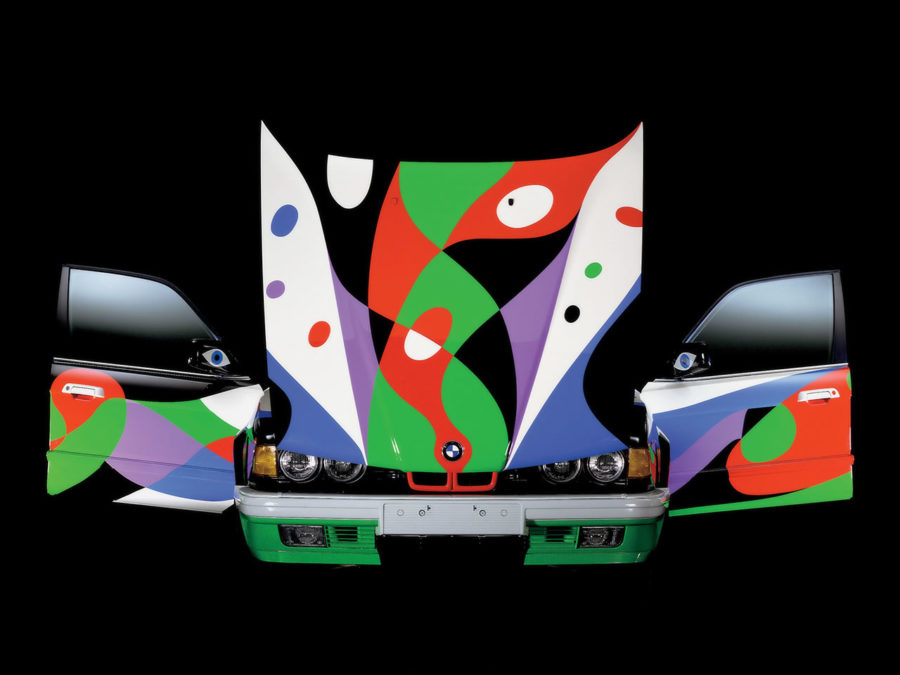1990 BMW 730i
It’s a shame this Art Car can’t be seen out on the streets. How different the world would look with colourful cars! A question the Spanish artist, César Manrique probably asked himself. He certainly believed that, as everyday objects, cars play an essential role in the appearance of our surroundings.
As well as being an architect, graphic designer, sculptor and landscape designer, Manrique was also a conservationist. This inspired him to design an Art Car that embodied a harmonious combination of technology and nature.
“That’s why I thought of designing the car in such a way as to give the impression of being able to glide through the air without any resistance,” he explained. A great idea – well executed featuring rolling, sweeping lines and lively colors symbolizing graceful motions.
Gallery
Click any image below for larger view
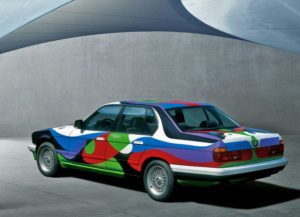
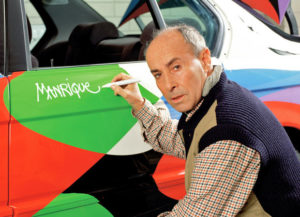
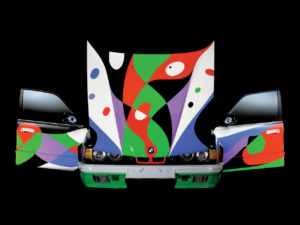
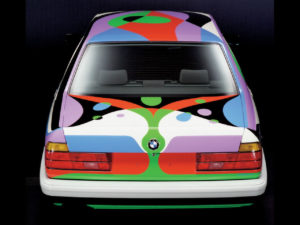
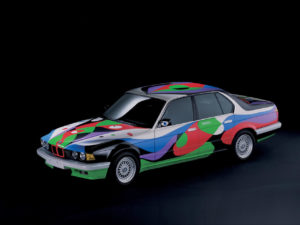
César Manrique | Spain
César Manrique — some people know him as an architect, others know him as a sculptor, and yet others as a designer, three-dimensional artist and painter. Manrique is a universal talent; he is also an enthusiastic ecologist, landscape designer and environmental conservationist, who manages to combine his creativity with these concerns as well.
It took over 40 years from 1919, when Manrique was born on the island of Lanzarote in the Canaries, for the first public exhibition of his work to appear. The breakthrough at the Venice Biennale in 1960 was soon followed by success in the USA, including exhibitions in New York where the artist lived for three years from 1965 onwards. In 1978 he was awarded the Grand Cross for Distinguished Service by the King of Spain.
In 1986 his work was placed alongside that of Goya and Velazquez representing his country at the Spanish exhibition in the Seibu Museum in Tokyo. In 1990, 40,000 visitors from all over the world came to see his works at the Hybernu Palace in Prague. Most of Manrique’s paintings share the theme of “Geology and Vulcanism.” Using brilliant and muted tones, he visualizes light and lava and the interplay between the two.
1990 BMW 730i
- 6-cylinder inline engine
- Overhead camshaft
- Displacement: 2,986 cc
- Power output: 188 bhp
- Top speed: 222 km/h
César Manrique and the BMW Art Car
Considered from the point of view of both architect and artist, Cesar Manrique has a clear opinion of the automobile: an indispensible feature of daily life, it shapes the picture of our towns and greatly influences the way we see the world around us. The artist’s concern with the automobile is closely tied up with this.
“That explains my idea of painting the BMW car to appear as if it were gliding through space without encountering any form of resistance.”
— César Manrique
When designing the BMW Art Car, Manrique was greatly inspired by differing concepts of movement. The artist said he had tried “to unite the notions of speed and aerodynamics with the concept of aesthetic appeal in one and the same object.” Glowing colors and broad sweeping strokes, which blend into the outlines of the automobile, are suggestive of effortless gliding and lithe movement.
Manrique, the advocate of harmony between man and nature, and between culture and nature, remains fully aware that along with the achievement of mobility, beginning with the invention of the wheel, human civilization took a “quantum leap” forward. Mobility is one of the key themes of the BMW Art Car’s international exhibition tour.
